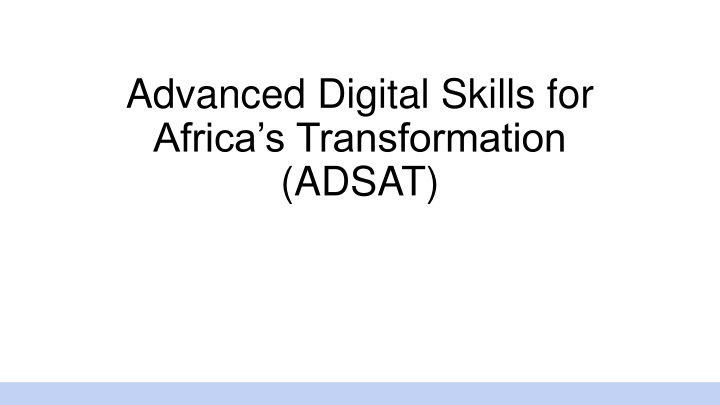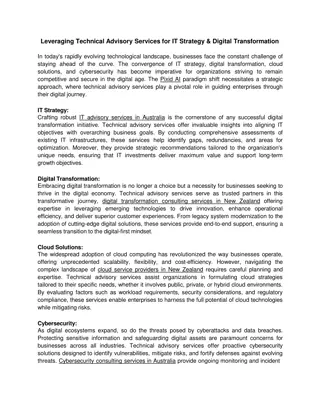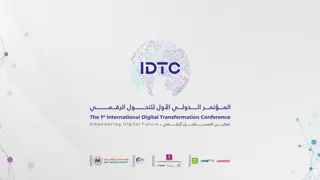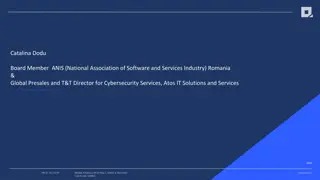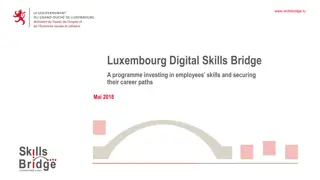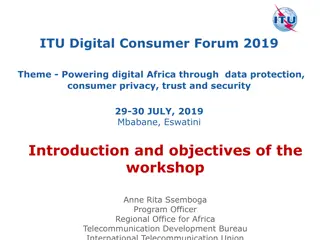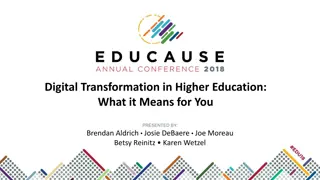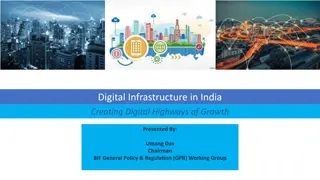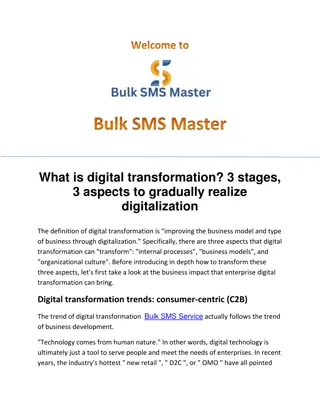Advanced Digital Skills for Africa's Transformation
Africa has made significant progress in participating in the digital revolution, but challenges persist in human capital development and higher education. Emerging economies in Sub-Saharan Africa prioritize skill development to address shortages and enhance research capacity. Development objectives aim to improve access and quality of training in advanced digital skills in engineering and technology institutions across Africa. Key activities include program development, faculty capacity building, infrastructure upgrades, and ecosystem strengthening.
Download Presentation

Please find below an Image/Link to download the presentation.
The content on the website is provided AS IS for your information and personal use only. It may not be sold, licensed, or shared on other websites without obtaining consent from the author.If you encounter any issues during the download, it is possible that the publisher has removed the file from their server.
You are allowed to download the files provided on this website for personal or commercial use, subject to the condition that they are used lawfully. All files are the property of their respective owners.
The content on the website is provided AS IS for your information and personal use only. It may not be sold, licensed, or shared on other websites without obtaining consent from the author.
E N D
Presentation Transcript
Advanced Digital Skills for Africa s Transformation (ADSAT)
Africa has made impressive progress to participate in the digital revolution, but its contribution is still marginal 78% $11.5 trillion (2016) 15.5% of global GDP (2016) 25% of global GDP (2020) 6 % of people without access to the Internet (2016) Number of accredited institutions that offer ICT programs in Rwanda <9% Gross enrolment at tertiary level 25% % of undergraduates pursuing a STEM degree in Kenya <1% The Global Digital Economy Public investment in higher education for several countries (% of GDP)* Digital Development & Higher Education in Africa 1
Emerging economies in Sub-Saharan Africa (SSA) are giving a higher priority to human capital development Harnessing the technological revolution and changing nature of work Key challenges to human capital formation in SSA Shortages of workers with high-level and applied research skills in priority sectors Designing future-ready curricula that encourage critical thinking, emotional intelligence, STEM skills, etc. High dependence on unskilled labor and natural resources, preventing knowledge-intensive and high-value added activities Training a qualified and adaptable labor force, including high-level scientists, engineers, technicians, Low quality and limited impact of higher education programs quality Strengthening the research capacity of universities Low institutional capacity to train sufficient numbers of professions with technical and critical thinking skills Enhancing the governance and management of higher education institutions 2
Development Objectives Development objectives. To increase access to and improve the quality and relevance of training for advanced digital skills and related competencies in select engineering and technology higher education institutions across Africa. Activities may include: Developing new and strengthening existing relevant programs in undergraduate engineering and computer science programs (e.g. Artificial intelligence/machine learning, big data analytics, internet of things, robotics, software/application developing, cloud computing, etc.) Building capacity in faculty to use innovative pedagogies, education technologies, and upskill in digital skills Upgrading classrooms and labs (teaching, research and computer labs) Strengthening national eco-systems to promote quality and innovation (e.g. NREN, national accreditation agencies, etc.) Outreach to secondary schools and industry; Regional collaboration and facilitation
Allocation and Country Participation Country Criteria World Bank IDA allocation available Dialogue with countries on interest and need (alignment with country analytical work, assessments, country action plans, etc.) Country interests formally communicated to the Bank ~ US$500 600 million across SSA ~ US$15-20 million per university (competitive selection) Proposed project would contribute towards the digital moonshot goal of SSA universities graduation 100,000 students annually with advanced digital skills 4
